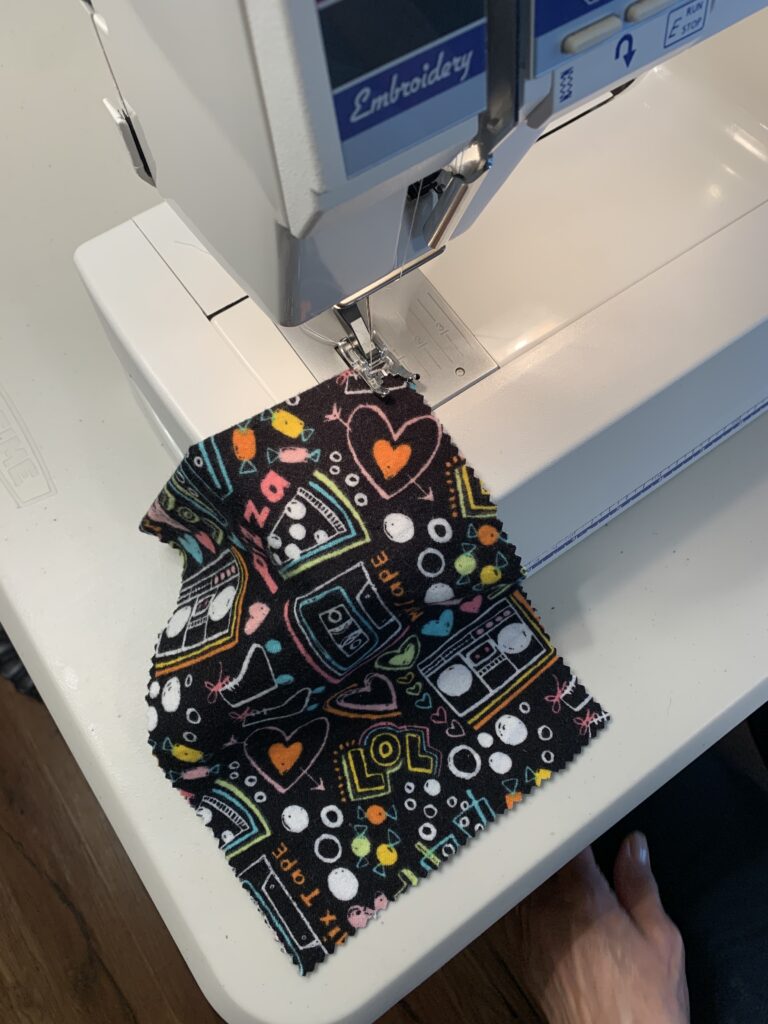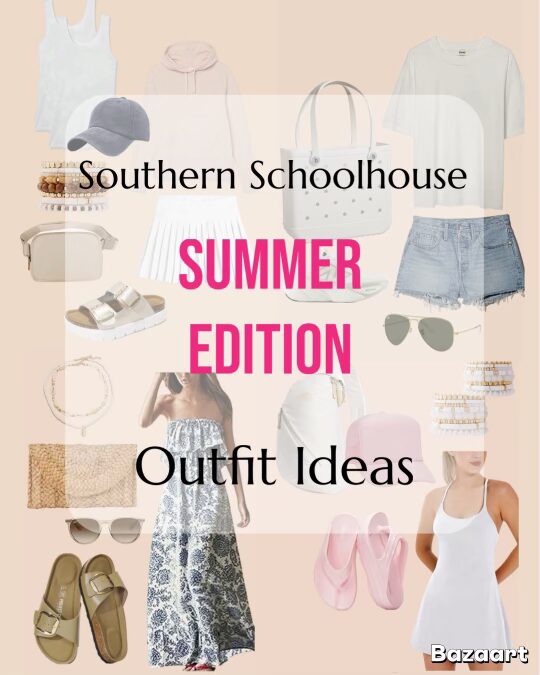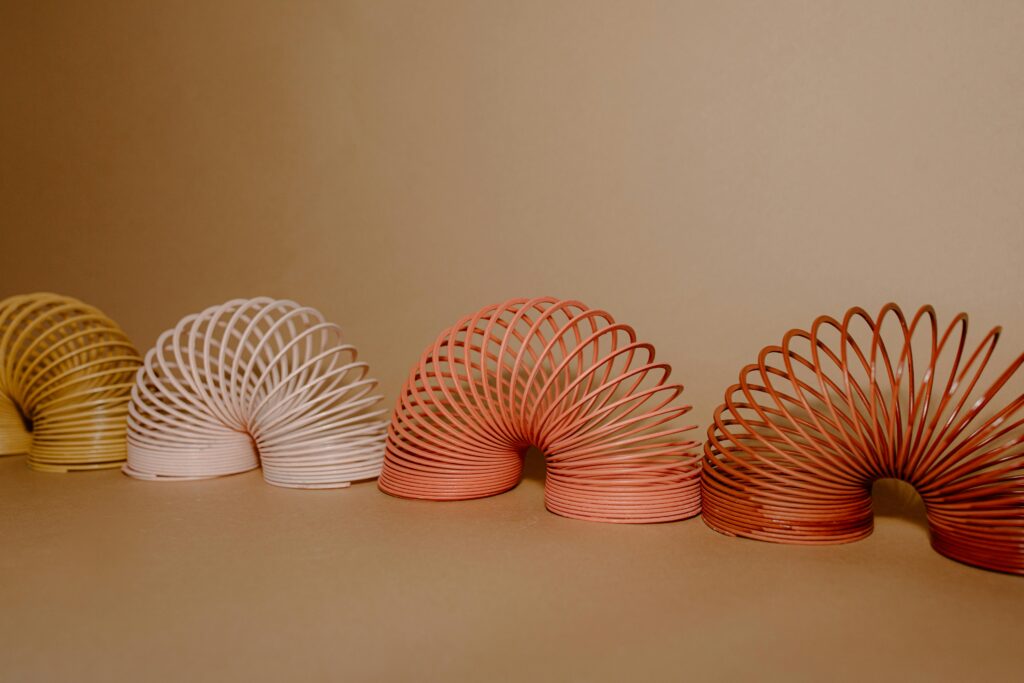School’s Out for Summer; One-Piece Swimsuit Addition

Summer one-piece swim style. Look great pool, lake or ocean side.
DIY Dry Erase Cloths Using Old Fabric (Budget Friendly)

“No one is perfect, that’s why we have erasers”-Anonymous
At Southern Schoolhouse, we love finding ways to repurpose old materials, like recycling flannel to create dry erase board erasers. This eco friendly, money saving craft is loved by the kids and makes your classroom feel homey.
School’s Out for Summer; Warm Weather Style Inspiration

Style inspiration for warmer days.
Book Adventures for Kids: Summer Reading Picks for Grades K-1

Book Adventures for Kids: Summer Reading Picks for Grades K-1
The Force Is Strong with Family Fun: May the Fourth Activities to Try

Need some fun activities for your little Jedi’s? May the Fourth (Star Wars Day!) is the perfect excuse for a fun, themed family day. Here are a bunch of ideas ranging from low-effort fun to full-blown galactic celebrations
Tips for National Boards Prior to Submission

Trying for National Boards is challenging. Here are some of the steps I took prior to submission to make the process smoother.
The Perfect Book Series for Little Ones

The Little Blue Truck book series is a sweet and fun collection of stories about a cheerful blue truck and his animal friends.
Create a Calming Center for your Classroom

A calming center is a must for all elementary and special education classrooms. This designated space comes with many names: quiet corner, calm down corner, chill zone etc but they all serve the same purpose, Emotional Regulation.
Education and Teaching Books for New Teachers

Reading educational and teaching books is important because it provides a way to gain knowledge, deepen your understanding of topics and develop teaching skills. Here are some books for new teachers as they begin their journey as a teacher.
Tracking Success: Using Data Collection to Monitor Student Behavior

In education, the term “data” is often heard throughout the day. In the early childhood (EC) world, “data” is especially emphasized when discussing students involved in the referral process, reevaluations, annual IEPs (Individualized Education Programs) and behavior intervention plans (BIPs). This article will focus on how to create a daily data collection sheet for students with a BIP.
Teacher Tested Sneakers, Pain No More!

Walking and standing on the school’s tile floor and putting style over comfort, led to knee and hip pain. Wearing shoes with no support had to be discarded as I switched my focus to supportive shoes. I invest in my shoes because it invests in my body. When I first put on my On Cloud Monsters, I could not believe the difference they made. I was actually able to run with no knee pain. I have had three past knee surgeries and thought running was a thing of the past. Although a higher price tag, I believe in the product and would highly recommend buying a pair. The following shoes have been tested by myself or my family. They are my top choices for teacher comfort sneakers and super cute too.
Make Your Own Letter Formation Sand Tray and Letters

Prior to owning my sand tray. I used a plastic pencil box filled with a little salt or sand. I filled the entire bottom of the pencil box with about a half an inch of sand. These boxes were perfect due to the built-in lid.
How to Teach Letter Identification and Formation

Teaching letter identification and formation is a commonly taught skill in early grades and special education. All littles, including those with motor and attentional difficulties will benefit from a multi-sensory approach to learning this skill.
Favorite Chapter Books-Fantasy Genre for a Great Bedtime Routine

These highlighted series are my all time favorite fantasy read-alouds. The literary adventures have created many memories and childhood fun for my family and I hope to share them with you. Even my 22 year old will still cuddle up beside me while I read Harry Potter to his little brother. Happy adventuring…
Organizational Systems in Small Group Learning

In all aspects of teaching, it is important to be organized and ready for each transition. When I moved from the regular classroom to the EC resource position, I found that my organization had to look different. In this article, I am going to share how I organize my materials for the many transitions I have throughout my day. I know not every technique works for everyone and even after six years, it is still a work in progress.
Dynamic Collaboration: Team Teaching Through Rotating Stations

Joy and I are the only two resource teachers at our school. It has taken us a few years, as our EC (Exceptional Children) population has grown, to figure out ways to fit everyone into a schedule. Covering service time, as well as building in time for our transitions, is always a challenge.
Sensory Tools: Unlocking the Power of Play and Focus

Over the years, I have definitely noticed an increase in sensory needs among all children and even adults. I know there are a variety of reasons for this increase, but for this article, we want to share some of the sensory tools that have been used in our classrooms and have helped with engagement and regulation.
Sensory Seating: Creating Comfort and Focus for Every Learner

Sensory Seating increases engagement. It is an important set of tools that can help to improve the success of your learning environment. We love sensory seating. It can be strategically placed ahead of time for those students that you know need extra sensory input and wiggle time.
Mastering the Skill of Theme: Guiding Students to Deeper Understanding

I don’t ever remember a time that I couldn’t read. I know that sounds like a stretch but I really don’t remember learning how to read – I could just read and I loved it. I was the shy girl that rode the bus to school for an hour and a half and I had my nose in a book all the way to school and all the way home. I am sure I had a book stuck in my desk at school that I would pull out when I finished my work to fill up my free time. My elementary school librarian would see me coming and say, “Another one already Beth?” So reading came easy to me to start with and I have always enjoyed it. I love reading mysteries, romance novels, suspenseful thrillers, biographies, autobiographies, and books on topics I am interested in at any given moment. As I reflect on my teaching career, I can think of SOME students who had a love for reading that matched my own. Unfortunately, I am sure you have found, as I have, that the majority of students struggle with reading in some way or they just do not find the joy in it. Reading is a chore for them and if given a choice they would not pick up a book. It breaks my book-loving heart!
The Power of Greetings: It is the Little Things

I have realized over the years that students thrive when they are in an environment with established routines, clear expectations and a positive classroom culture. This is true for all the different roles in the school (classroom teacher, support staff, special area teachers and even administration). This may seem simple, but classroom management is one of the areas in which my mentees often ask for additional help.
